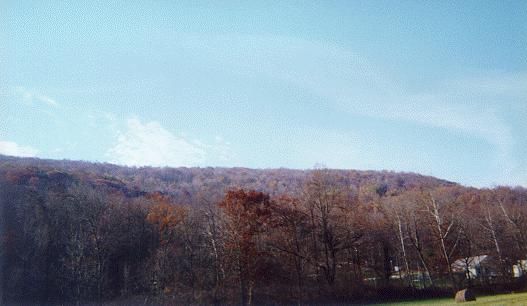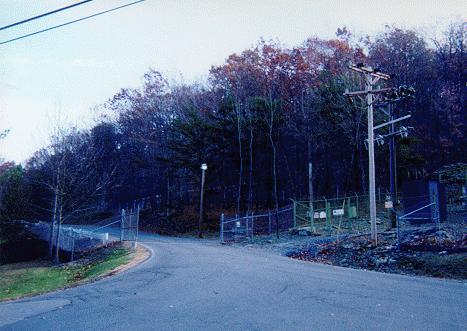|
Site R is the Alternate Joint
Communications Center (AJCC) located in Raven Rock
mountain [hence the name Site R] just over the
Pennsylvania State Line near Waynesboro, Pa. The DISA
Site-R Computer Operations staff provides computer
services to the NCA, the Joint Staff, the OSD and other
DoD agencies through Memorandums of Agreement (MOAs). The
facility functions as the disaster recovery site for the
JSSC's GMC and DISA GCC. The various service [Army, Navy
and Air Force] Emergency Operations Centers (AFEOC) are
also located at Site R. Support is provided 24 hours per
day, 7 days per week. The facility's Operations Center,
DCS Technical Control Facility, the Northeast Dial Service
Assistance Center and Information Center provide planning,
installation, operation, and maintenance of over 38
communications systems (switching, transmission, data
distribution, visual information, and power generation)
that support the various customers of the Alternate Joint
Communications Center Site R.
The initial concept for the Alternate
Joint Communications Center was conceived in 1948. After
1949, the Soviet Union detonated its first nuclear weapon
in 1949, a high priority was established for the Joint
Command Post to be placed in a protected location with
close proximity to Washington, D.C. for swift relocation
of the National Command Authorities and the Joint
Communications Service. In 1950, President Truman approved
Raven Rock Mountain, Pennsylvania, as part of Camp Albert
Ritchie, Maryland. This new site was named the Alternate
Joint Communications Center (AJCC) Site R (R for Raven
Rock). In 1951, construction of the facility began, and in
1953, the AJCC Site R became operational.
Between 1953 and 1971, the Army
communications element at Site R provided communications
support to Site R tenants as a direct reporting unit of
the U.S. Army Joint Support Command. In 1971, as part of
the Strategic Communications Command (STRATCOM) move to
Fort Ritchie, the communications unit was redesignated as
the Directorate of Telecommunications, under the Fort
Ritchie Garrison Commander.
In 1976, the unit was redesignated as
the USACC Site R Telecommunications Center, a direct
reporting element to the 7th Signal Command. And in 1978,
the unit was moved back under the command of the Fort
Ritchie Garrison, as the Directorate of
Telecommunications.
The Special Projects Office (later to
become the Protective Design Center) was created in 1977
to work on a classified Department of Defense program. The
Alternate National Military Command and Control Center
Improvement Program involved criteria development,
studies, and preliminary design of a deep underground
highly hardened and survivable command and control center.
The center included separate structures for command
personnel, power, fuel, and water. Over 3 miles of air
entrainment tunnels were required as well as access shafts
to the surface. Although canceled in 1979, the experience,
expertise, and leadership in protective design and
classified programs that Special Projects gained from this
work brought other unique projects and major programs to
the District.
In October 1981, USACC Site R
Telecommunications Center was reorganized and redesignated
as USACC Site R under Headquarters, 7th Signal Command. In
May 1984, USACC Site R was redesignated as USAISC-Site R,
remaining as a direct reporting unit to 7th Signal
Command. In October 1988, USAISC-Site R was redesignated
as the 1111th U.S. Army Signal Battalion* and placed under
the 1101st U.S. Army Signal Brigade, Fort Leslie J.
McNair, Washington, D.C., as the Army support battalion
responsible for the maintenance, upkeep and communications
of the AJCC Site R.
In October 1993, the 1111th U.S. Army
Signal Battalion was placed under the 1108th U.S. Army
Signal Brigade, Fort Ritchie, MD. Most base operations
activities were removed from the battalion's mission,
leaving communications as the primary unit mission.
The 1995 Base Realignment and Closure
Commission directed the relocation of U.S. Army Signal
Command units and some Base Operations support personnel
from Fort Ritchie to Fort Detrick, which will become the
home of East Coast long-haul communications. These units
include the 1108th U.S. Army Signal Brigade, the 1111th
U.S. Army Signal Battalion and Information Systems
Engineering Command-Continental United States (ISEC-CONUS).
The 1110th U.S. Army Signal Battalion, already at Fort
Detrick, is assigned to the 1108th. More than 1,140
military members and civilian employees will be
transferred under the order. Site R and its personnel came
under control of the Fort Detrick commander 01 October
1997. The actual movement of units began 01 October 1996,
and Fort Ritchie was scheduled to be closed by Sept. 30,
1998, well ahead of schedule.



|